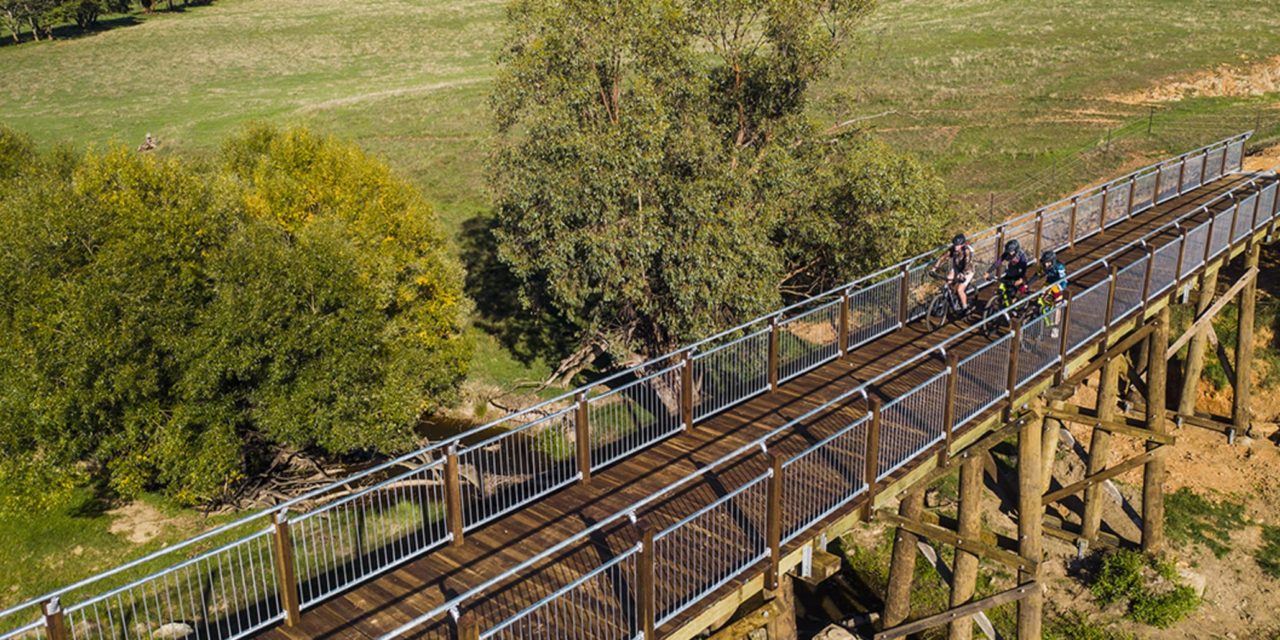Progress on the Boorowa to Galong Rail Trail project could see cycling tourists cruising through the area before long after Hilltops Council agreed to provide the committee with $25,000 to help fund a feasibility study.
Nine councillors supported the motion while two, Mayor Margaret Roles and Cr Greg Armstrong, voted against providing the funding.
The councillors voted to endorse a $25,000 contribution toward the feasibility study to be funded from the allocated $60,000 in the 2021-22 budget for “Cycling Infrastructure projects”.
Rail trails are shared-use paths built on disused railway corridors.
They provide safe, offroad pathways for everyone to cycle, walk, run, push a pram, ride a scooter, and enjoy the outdoors.
Many rail trails are wheelchair accessible, and all have moderate gradients.
There are rail trails across Australia and around the world.
Rail trails link large and small country towns through scenic countryside, just as railways did in the past.
In Victoria, SA, WA and Tasmania there are over 2,000km of rail trails but only about 140km in NSW, mostly in urban areas.
Most trails have a gravel or dirt surface suitable for walking, or riding mountain bikes and horses. Some are sealed and are great for touring cyclists too.
Following the route of the railways, they cut through hills, under roads, over embankments and across gullies and creeks.
Rail trails can also provide linear conservation corridors protecting native plants and animals. Wineries and other attractions are located near many trails as well as varied accommodation options, resulting in a proven positive impact on local tourism.
The 21km Tumbarumba to Rosewood Rail Trail in the Snowy Valleys commenced operation in April 2020 but due to Covid-19 the rail trail wasn’t officially opened until April 2021.
Since opening the trail has attracted over 38,000 users, with roughly 20,000 in just the first 12 months.
Not to mention a whopping 13 new businesses have established across Tumbarumba and Rosewood areas.
Generally, most visitors come to the area for about two to three days.
Boorowa Galong Rail Trail Inc. was established to progress the development of a rail trail between Boorowa and Galong and it proposes a path about 29km in length to run from town to town.
The group requires a feasibility study for the conversion of the disused railway corridor between Boorowa and Galong.
This is intended to assist in obtaining funding and determining viability of the project. Experienced trail planners Mike Halliburton and Mike Maher quoted the cost of $45,000 for the preparation of a feasibility study for Boorowa Galong Rail Trail.
The feasibility study will also address several questions proposed by rail trail advocates and opponents, including: • Is there a market for the proposed trail (i.e. local people and visitors who will be attracted to use it)? • Are the local governments and key stakeholders supportive of the concept? • Are there supportive/strong advocates (in the community)? • Is there a supportive community? • Will the trail provide a quality user experience (terrain/landscape/history)? • Would the trail be value for money? • Is there a commitment to the ongoing maintenance of the trail (“friends of …” group or support network)? • Will the trail provide a unique experience?
Is there a demonstrated benefit to trail users and, especially, the host communities? Council also voted to allocate the remaining $35,000 in the Cycling Infrastructure projects budget to the Pedestrian Access and Mobility Plan (PAMP).
Brianna O’Rourke

